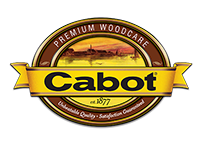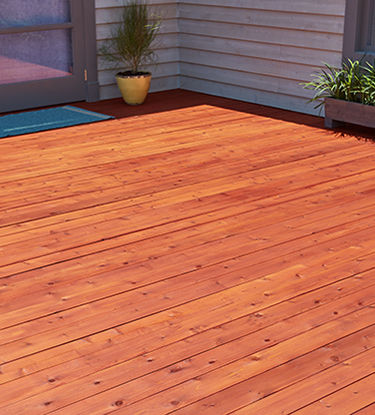
THREE SIMPLE STEPS FOR STRIPPING YOUR DECK
Sometimes, it's necessary to remove the previous coating on your deck before you can lay down a new, uniform finish. Follow these guidelines for complete removal of an old, oil-based coating.
1. ASSESS THE CONDITION OF THE SURFACE
Understanding the condition of your wood surface before you strip is important because not all decks need to have the previous coating removed. If you're lightening the opacity (from a solid to a semi-transparent finish, for example) or making a dramatic color change, then stripping is required. The same is true if the surface has experienced extreme weathering, and cracking or blistering of the previous coating has occurred.
All other types of surface reconditioning can be accomplished with either Cabot® Problem-Solver® Wood Cleaner or Problem-Solver Wood Brightener. Use Problem-Solver Wood Cleaner to remove mildew stains and give the new top coat a clean substrate to adhere to. For more cleaning power, use Problem-Solver Wood Brightener to remove old/gray wood fiber, tanning and rust stains.
2. REMOVE THE COATING
Once you've determined that the coating needs to be removed, apply Cabot Wood Stripper. Use it on decks, steps and furniture, as well as vertical surfaces like fences and siding. Liberally apply the stripper to dry surface and let it stand for 15 minutes. Next, rinse the surface with a garden hose or, for best results, use a pressure washer. The entire surface must then be neutralized with Problem-Solver Wood Brightener, which is included with the kit of stripper. Depending on the thickness of previous coats, multiple applications of the wood stripper may be necessary to completely remove them from the surface.
3. TOUCH UP
Once the surface is completely dry, inspect it for any rough areas. Sand them smooth if it's a deck project. It's also important to ensure complete coating removal prior to applying another top coat to your project.
